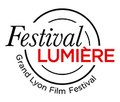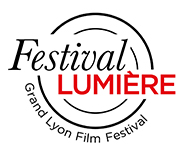The Première files By Thomas Baurez
Le Beau voyage
PostED ON OCTOBER 10
I had mentioned that the only time I saw Bertrand Tavernier at work was in October 2009 somewhere in the region of Cantal.
The director was shooting The Princess of Montpensier, based on a short story by Madame de La Fayette, in an 11th century castle. The text in question began as follows: ‘While civil war was tearing France apart under the reign of Charles IX, love did not fail to find its place among the countless disturbances and to provoke many others in his empire.’ One could already sense from these few lines, the ways in which the minor and main History could waltz together. Without stumbling. In October 2009, The Princess of Montpensier was there, within reach. And so was Tavernier. First of all, my taxi had to criss-cross the Lot valley and, at the bend in the road, an expanse of greenery opened up to me, a long stretch on which a majestic medieval castle stood. The edifice that had survived the inexorable passage of time immediately sent the 21st century back over the hills. Bertrand Tavernier was there, surrounded by his cavalry and his many admirers. I found him fine tuning the movements of his performers with obvious confidence. Everybody could make suggestions, but he decided.

The Princess of Montpensier, 2010
Period costume films were one of Bertrand Tavernier's major endeavours. An inclination that has often made him look like a classicist, as if modernity could only be found in the contemporary. Behind his steady-cam man, the filmmaker positioned himself at the foot of his Montpensier castle and repeated his mantra to anyone who would listen (that is to say, everyone): "We must eliminate the antique aspect. Being modern is, above all, this wonderful capacity to bring each era closer to us." Jean Rochefort, on the set of Let Joy Reign Supreme, had eloquently added, “Pretend as if the camera had been invented in 1778”.
Bertrand Tavernier also trifled with words. Reciting a dialogue, Lambert Wilson dared to replace one expression with another. The filmmaker, suddenly stunned, had stomped his foot to show his annoyance. He would later explain to me that when reading Madame de La Fayette's novella, a ‘simple’ adjective opened up surprising perspectives. "Take ‘tormented’, in the sixteenth century this word was extremely violent. It meant: to beat, hit, whip... Nothing to do with the figure of the brooding romantic”. Thus, we had to study the text in depth. I also remember the shot of the hanging white sheets that the wind had blown over or wrinkled. The props master looked apologetic. "We're not here to make something beautiful," Tavernier said, satisfied with what fate had given him. The filmmaker had looked worried all the same. In fact, his mind was wandering. He was desperately trying to recall the title of a Bobby Lapointe song. I didn't dare ask him at the time what it had to do with his Montpensier. I would like to think now that it was Le Beau Voyage.

